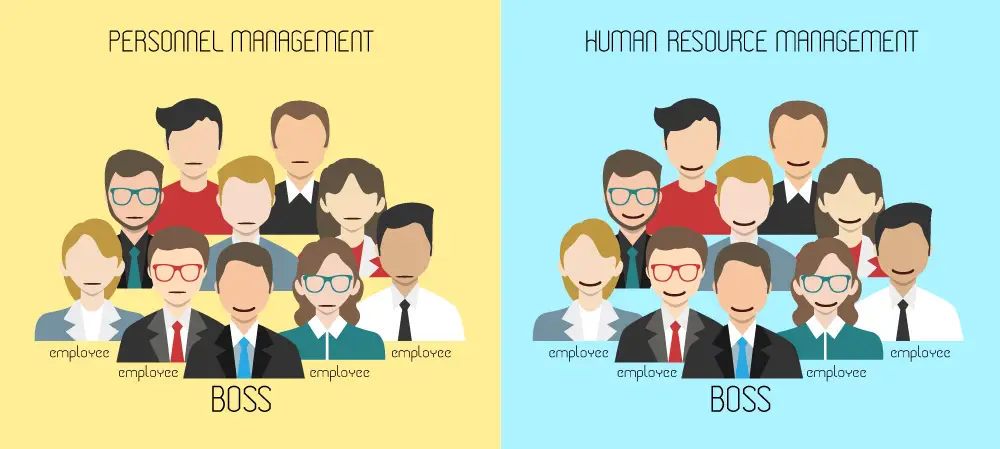
In an organization, a group of people (employers and employees) work together with a common motive i.e. to achieve their organizational goal, which is only possible when efforts of all the people in the organization are efficiently managed. There are two basic approaches that employers adopt to manage people or employee in their company. They are
1) Personnel Management
Personnel are those who are employed in the workplace. Personnel management is an administrative function which exists in an organization to ensure right personnel at right organizational activity. It is a traditional approach of managing employees which focuses on adherence to policies and rules of organization. Personnel management is concerned with planning, job analysis, recruitment and performance appraisal along with training and compensation management. Personnel management also focuses on managing labor relationship by handling employee grievances.
2) Human Resource Management
Human resource management is a modern approach of managing people at workplace which focuses on acquisition, development, utilization and maintenance of human resource. It combines physical energies and their strengths with human competencies. In simple words, human resource management can be referred as the policy which ensures right quality and quantity of human resource in the organization. Like personnel management, human resource management is also concerned with planning, job analysis, recruitment and selection, hiring and socialization, training, performance appraisal, rewarding, and compensation management.
How Personnel Management is different from Human Resource Management?
At this point, you might be thinking, what actually is different between personnel management and human resource management. Not only you but many critics have also argued regarding this topic. In fact, some of them have commented that Human Resource Management is just a new title given to Personnel Management in endeavor to rebrand personnel department and achieve more acknowledgement for their role. On the other hand, remaining critics, after thorough inspection, have noted major differences between personnel management and human resource management.
Although both the management seem to be involved in same organizational activities, the difference is in the way those activities are approached and operated.
For more detailed information regarding differences between personnel management and human resource management, please check the table below.
| Basis of Difference | Personnel Management | Human Resource Management |
|---|---|---|
| Meaning | It is traditional approach of managing people at workplace and is concern of personnel department. | It is modern approach of managing people at workplace and is concern of managers of all level (from top to bottom). |
| Nature | It is a routine function. | It is a strategic function. |
| Focus | Efficient management is given priority. | Human values and individual needs are given priority. |
| Function | Personnel administration, labor relation and employee welfare are major functions of personnel management. | Acquisition, development, utilization and maintenance of human resource are major functions of human resource management. |
| Objective | It manages people in accordance with organization’s goal. | It determines human resource needs and formulate policies by matching individual’s needs with organization’s needs. |
| Perspective | It regards people as basic input to make desired output. | It regards people as strategic and valuable resource to make desired output. |
| Job design | Jobs are designed on the basis of division of labor. | Jobs are designed on the basis of teamwork. |
| Interest | Organization’s interest is valued the most. | Interest of organization and interest of employee is harmonized. |
| Orientation | It is discipline, direction and control oriented. | It is development oriented. It provides space for employee involvement, performance and growth. |
| Communication | Communication is limited, or even restricted. | Communication is open. |
| Emphasis | It emphasizes on adherence of rules and regulations and their implementation. | It emphasizes on combination of human energies and competencies. |
| Benefits |
|
|
| Result | Organizational goal is achieved and employers are satisfied. | Organizational goal is achieved and both employers and employees are satisfied. |
